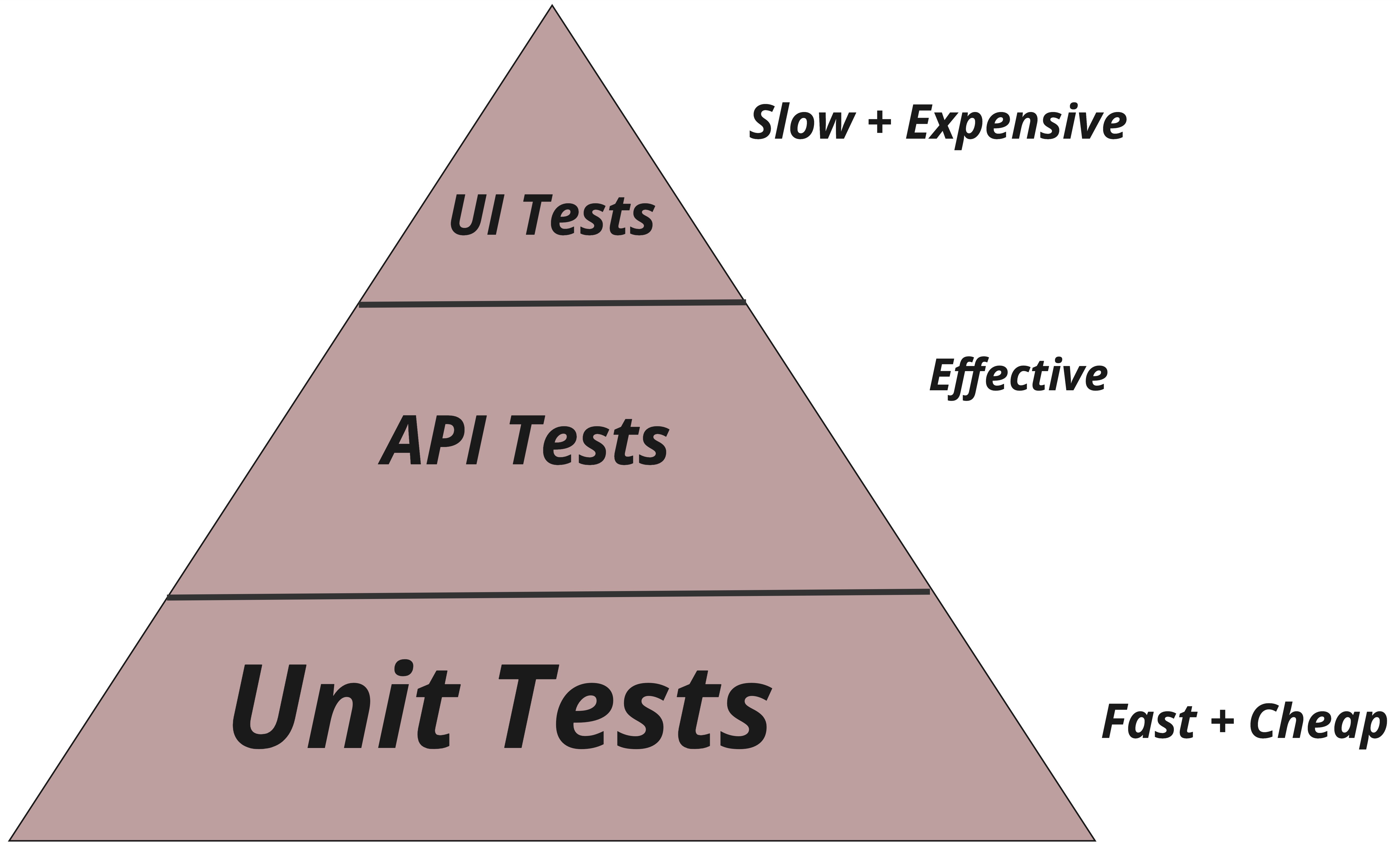Maximizing Efficiency With the Test Automation Pyramid: Leveraging API Tests for Optimal Results
This article will discuss "How to leverage the Automation Test pyramid" to drive successful automation.
Join the DZone community and get the full member experience.
Join For FreeWe all know about the test pyramid and how organizing/managing your tests as per the test pyramid principles can help drive quality for your teams. In general, most of the test automation efforts fail due to a lack of automation strategy on how to automate certain aspects of your application. Today we are going to go a step ahead and will be discussing "How to leverage the Automation Test pyramid" to drive successful automation.

We will be focusing on the top two layers of the pyramid for our automation strategy, but it's important to note that the bottom layer should not be ignored.
Unit Tests: It serves as the foundation for the entire structure and is crucial for a stable and long-lasting automation approach. Unit testing plays a vital role in this foundation, providing a solid base for the rest of the automation strategy. Without strong unit tests, our automation efforts may become unstable and prone to failure. We should understand the importance of the bottom layer and work closely with our development team to ensure that our automation strategy is built on a solid foundation.
API Tests: With the rise of Rest APIs, the way applications interact with each other and with external systems has drastically changed. The majority of business logic is now implemented in the API layer, making it a critical component of any modern application architecture. This shift in architecture allows for greater flexibility and scalability and the ability to easily connect and integrate with a wide range of systems and services. However, it also means that proper testing and validation of the API layer is essential to ensure the stability and reliability of the overall application. By focusing on the API layer, we can ensure that the business logic is functioning as intended and that the application can handle the expected traffic and usage. In short, the API layer is the backbone of the application and plays a key role in the stability and performance of the application.
API testing is a powerful tool that can drive significant value for your automation efforts. There are many different applications of API testing that can help to improve the stability and reliability of your application.
- One such application is test data generation. By using API tests to generate test data, you can ensure that the data being used in your tests is representative of real-world scenarios. This can help to identify potential issues or bugs that may not be uncovered by using static test data. Additionally, using API tests for data generation can also help to automate and streamline the test data creation process, saving time and resources.
- API tests are a key component of Shift Left Testing. API (Application Programming Interface) tests focus on testing the interactions between different software components rather than testing the user interface. This allows developers to catch issues early before they become major problems. API tests also provide a level of abstraction that makes it easier to test different components in isolation, which leads to more efficient testing.
- Furthermore, in today's digital age, where users expect instant gratification, it's essential to have a fast and efficient testing process in place. Long-running tests can slow down the development process and hinder the ability to quickly release new features and updates. By focusing on API tests, you can significantly reduce the execution time of your tests and shorten the overall development cycle. This allows for faster feedback and quicker resolution of any issues that are identified. Additionally, by shortening the execution cycle, you can also increase the number of tests that can be run in a given timeframe, improving the overall coverage of your tests.
UI Tests: UI tests, also known as user interface tests, are automated tests that verify the functionality of a software application from the user's perspective. They are designed to test the application's user interface, including its visual elements, buttons, and interactions with the user. UI tests are typically performed after integration/API tests and are part of the end-to-end testing phase of the Test Automation Pyramid.
UI tests are best used for verifying the look and feel of the software application and ensuring that the user interface behaves as expected. It is important to use UI tests in combination with other types of tests to ensure comprehensive testing and to catch any issues that may not be uncovered by unit or integration tests.
When deciding when to use UI tests, it is important to consider the trade-off between testing time, effort, and cost. UI tests are slower and more manual compared to unit and API tests, so they should be used in moderation and strategically.
Teams should be strategic in their approach to automating UI tests. These tests should be automated only when necessary, and they should be designed to minimize flakiness.
In conclusion, the Test Automation Pyramid is a powerful tool for maximizing efficiency in software testing. By focusing on unit tests at the base of the pyramid and gradually increasing the scope of testing as we move up the pyramid, we can ensure that our tests are comprehensive and effective. By leveraging API tests, we can achieve optimal results and ensure that our software meets the needs of our customers. With the right approach, the Test Automation Pyramid can help us to ensure that our software is of high quality and ready to be released to the market.
Opinions expressed by DZone contributors are their own.

Comments